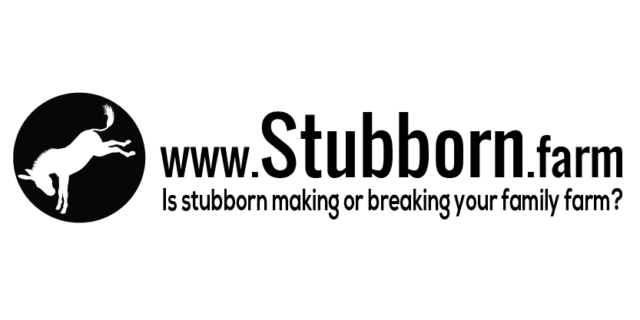You spend time and effort measuring and monitoring animal performance metrics on your dairy. Just as football or basketball coaches pour over player stats to help improve team success, dairy producers track individual, group and herd data to enhance their operations’ productivity and profitability.
Users of animal monitoring systems that track and record the predictive data of daily rumination time and activity also gain insight into animal well-being, which is quickly becoming a critical factor from management and consumer perspectives.
The knowledge dairy managers glean from these data give them enhanced opportunities to improve animal care and well-being as they fine-tune their management cow by cow, group by group and for the entire herd – all at once.
Trend watch
By watching trends and monitoring reports, within a day and across time, dairies can identify which animals require an intervention and evaluate the success of that intervention. The technology enables users to track the real-time evolution of health challenges and veterinary treatments (Figure 1).
Monitoring these data for deviations from an established baseline aids dairy managers and advisers, like nutritionists and veterinarians, to accurately target cows for interventions or special attention.
For instance, the information depicted in Figure 1 helps users determine when an intervention is beneficial. The decision is backed up by data to verify actions taken.

The data also offer a starting point from which to begin deeper investigations into protocols and procedures to again ensure animal well-being is the top priority.
For instance, animal monitoring records help producers and their advisers better understand how animals adapt (or don’t adapt) to changes in housing, nutrition, health protocol updates and more.
Changing protocols
A dairy near Merced, California, recently used animal monitoring to help understand the effects of a health protocol. As a result of the better intelligence, the operation tweaked its protocol – which led to improved animal care as well as an improvement in performance.
Prior to the use of the animal monitoring system, the dairy moved far-off dry cows to a new pen – which included a ration change – and performed a standard vaccination protocol. They discovered that these were too many changes at once.
Cows significantly dropped rumination levels. Furthermore, health issues at calving, likely resulting from previously undiagnosed problems during this time frame, were a challenge.
The dairy frequently recorded a higher-than-desired level of cows calving early, which led to increased incidence of retained placenta and metritis and, ultimately, reduced reproductive performance in the following lactation.
The data enabled dairy managers to see the impact of multiple stresses on individual cows, as well as the group, that had previously gone undetected because physical symptoms at the time of the stress were not apparent.
Performance issues in the form of transition period challenges were recorded after the fact, but until the predictive data was available, it was nearly impossible for the farm to determine when or why the problems were caused.
Once the cause was pinpointed, the dairy changed the timing of the vaccination, and cows responded with only slight rumination drops following the pen move and speedy recovery to baseline levels.
Plus, since the management change, the dairy has experienced far fewer cases of retained placenta and, instead of 25 to 30 percent of cows calving early, that number has dropped to less than 5 percent.
The data clearly demonstrated the action taken by the dairy was correct. Now they can verify that fact as well as the results from their actions.
More opportunities to affect change
The opportunities presented by the superior monitoring capabilities of this technology are many. They range from modifying heat abatement scheduling to amending heat detection and breeding programs to analyzing nutrition and feed delivery protocols. All of which lead to potentially optimized animal well-being.
Users are also able to focus health treatments/interventions and animal handling on animals that really need help versus those that do not require additional care – and have the data to back up these decisions.
This monitoring is especially critical during the transition period since it allows dairy managers the ability to streamline their focus and hone in on those cows that are sick. And it means cows that do not require additional attention are able to return to desirable eating and lying behaviors more quickly.
For example, research conducted by Cornell University and presented at the 2015 American Dairy Science Association annual meeting demonstrated that rumination monitoring technology accurately identified displaced abomasum as early as three days before cows were identified by highly skilled dairy employees.
Further, the rumination monitoring technology identified cases of ketosis about two days prior to physical symptoms and found cases of indigestion nearly a day before physical symptoms appeared.
Gaining a leg up on these health challenges means dairies have the ability to intervene early and activate proactive preventive measures rather than react, leading to healthier, more productive cows. And happier, more productive employees.
More scrutiny ahead
Changes to rules and regulations like the veterinary feed directive, in addition to increasing questions from consumers as to where their food comes from and how it was raised, mean on-farm practices and procedures will be under more scrutiny and analysis.
While it’s understandable to be cautious about how to respond to this trend, the increased inquiries are an opportunity for you to demonstrate verifiable good animal husbandry.
The ability to show the actions you’ve taken to increase animal care and well-being on your dairy through the use of actionable data – and then be able to show direct results of that action – offers excellent discussion points for better dialogues with consumers and the food chain.
Animal monitoring data not only offer producers peace of mind but are one more tool to give suppliers that same assurance regarding cow health and well-being. Dairy producers can verify what they do and why they do it. The benefit of increased trust is priceless. PD
References omitted due to space but are available upon request. Click here to email an editor.

-
Gláucio Lopes
- Large-Herd Manager
- Repro Specialist
- SCR Dairy Inc.
- Email Gláucio Lopes






